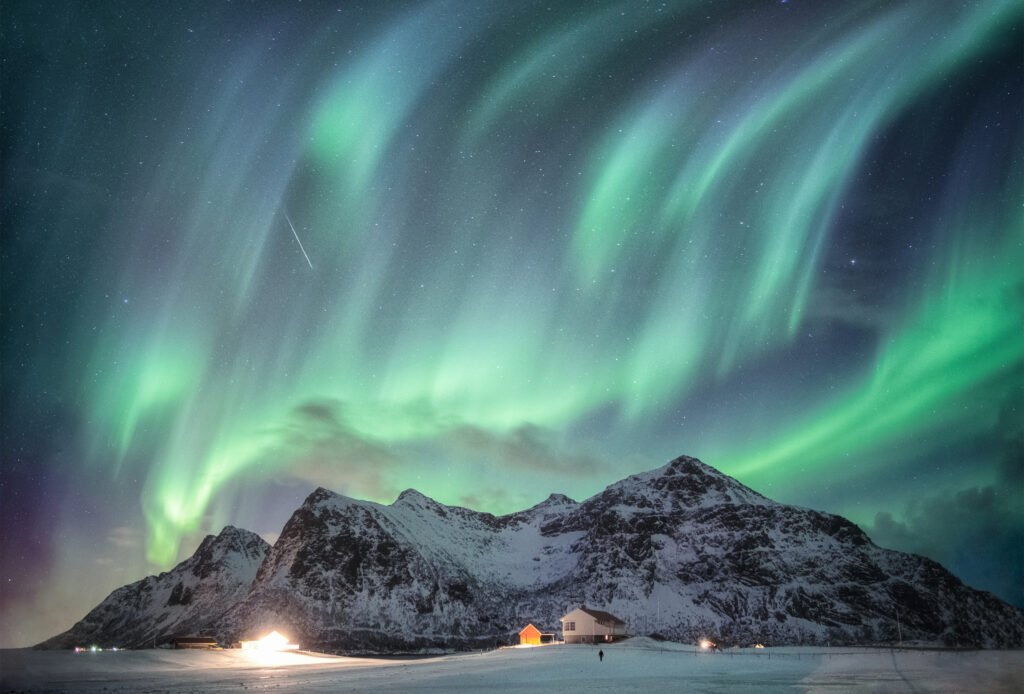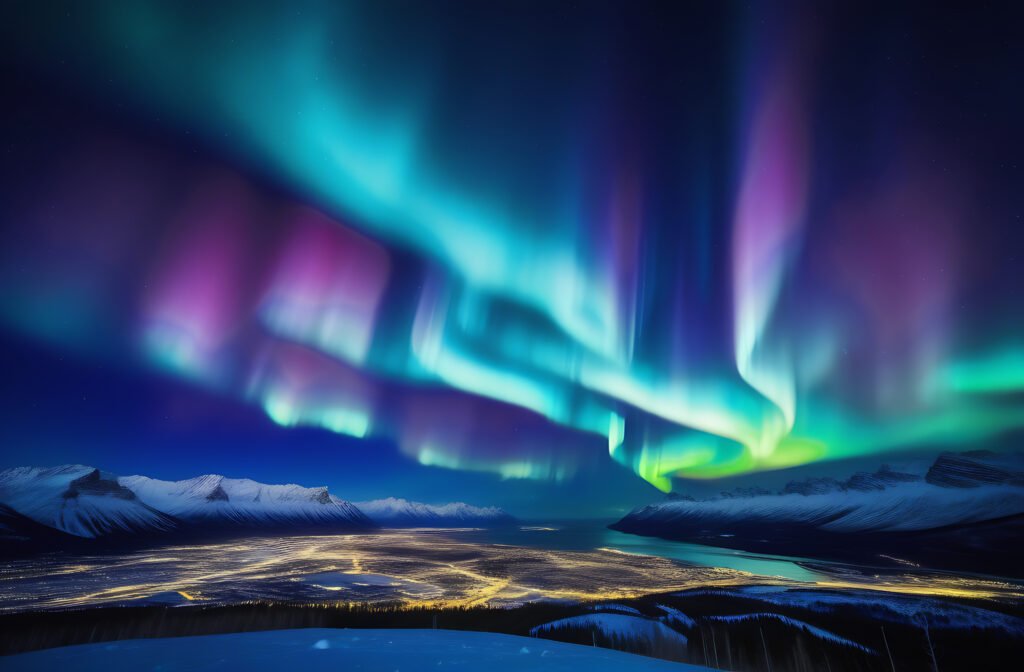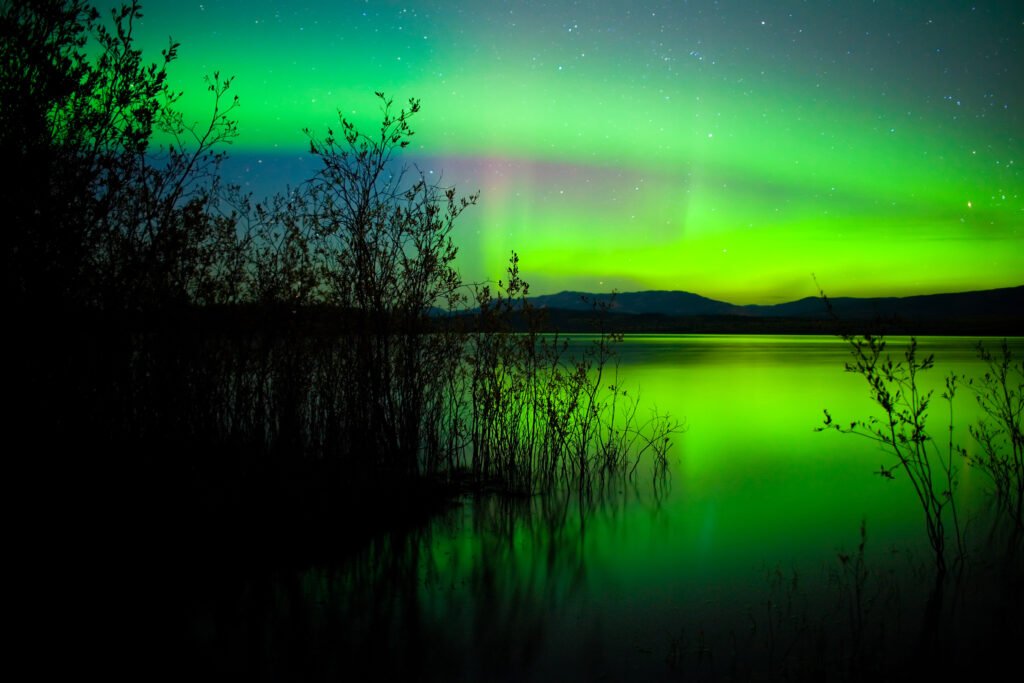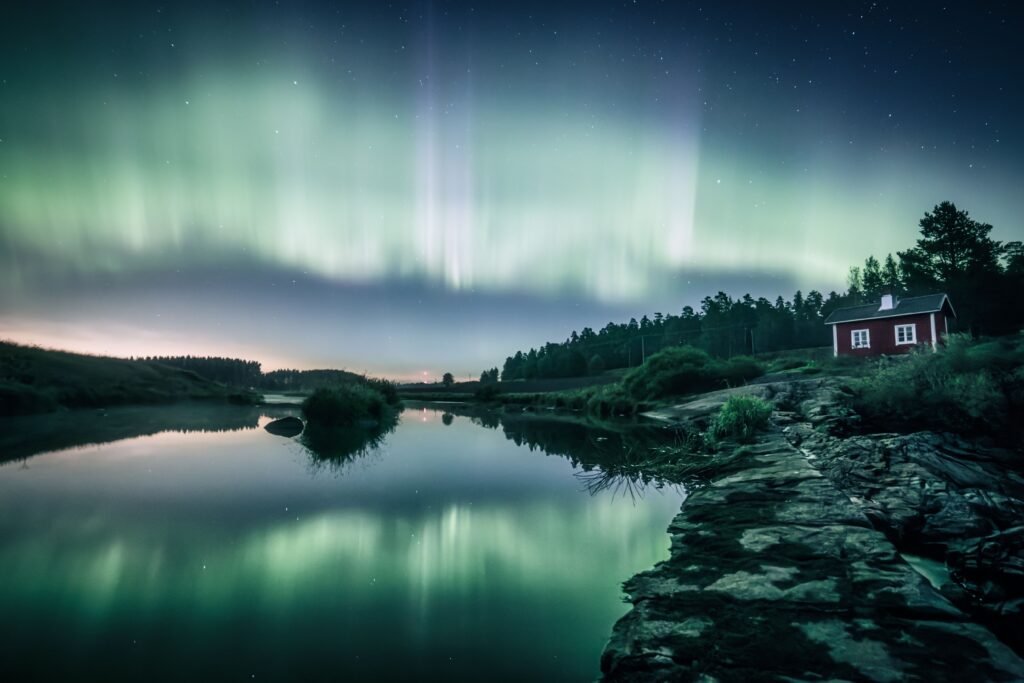Aurora borealis, also known as the northern lights is a breathtaking natural phenomenon that illuminates the night sky with waves of green, purple, and blue.
These dazzling lights result from charged particles from the sun colliding with Earth’s atmosphere, creating a spectacular display that has fascinated humans for centuries.
This guide will provide you with everything you need to know about witnessing the aurora in the sky, including the best locations, forecasts, and tracking methods.
Whether you’re planning a trip to Norway or searching for the best time to see northern lights in Norway 2025, this guide will help you maximize your chances of experiencing this incredible spectacle.
Beyond being a natural wonder, the northern lights also hold cultural and historical significance, with many ancient civilizations believing they were messages from the gods or spirits.
Today, modern technology has made it easier than ever to predict and track aurora activity, helping travelers plan their perfect trip to see this mesmerizing event.
Best Northern Lights Country
The best places to witness the aurora borealis include Norway, Finland, Sweden, Iceland, Canada, and Alaska. Among these, Norway stands out for its accessibility and consistent displays.
Cities like Tromsø, the Lofoten Islands, and Alta offer some of the best chances to see the northern lights Norway location, making them prime destinations for aurora enthusiasts.
Why Norway is the Best Destination
Norway’s location within the auroral oval—a region where aurora activity is strongest—makes it a top choice for northern lights seekers.
Additionally, Norway’s infrastructure, including guided tours, cozy accommodations, and easy access to remote viewing spots, enhances the experience.
Unlike other countries where cloudy weather can be a challenge, Norway’s coastal regions often experience clear skies, increasing visibility.
Northern Lights Forecast
Tracking the northern lights requires reliable forecasts. The northern lights Norway forecast is influenced by solar activity and geomagnetic storms.
Several apps, including the Northern Lights forecast Norway app, provide real-time updates and predictions for the best viewing times.
Understanding the aurora forecast involves monitoring the KP Index, a scale from 0 to 9 that measures geomagnetic activity.
A KP value of 3 or higher usually indicates a good chance of seeing the northern lights in Norway.
Additionally, space weather websites provide information on solar wind speeds and density, which can help predict when strong auroras might appear.
Northern Lights Strain
For those interested in the cultural and scientific aspects of the aurora, understanding how geomagnetic activity affects the appearance of the lights is essential.
The strength and visibility of the aurora lights depend on solar wind conditions and geomagnetic storms.
High-intensity solar flares can lead to exceptionally bright displays that can be seen further south than usual.
Northern Lights Map
A detailed northern lights map can help travelers locate the best spots for viewing.
Maps showing geomagnetic activity zones highlight areas where the aurora is most likely to appear, particularly in northern Norway and other Arctic regions.
Websites like NOAA’s Space Weather Prediction Center offer real-time aurora oval maps that display where aurora activity is currently strongest.
Northern Lights Time
The best time to see northern lights in Norway 2025 is between September and March when the nights are longest. However, specific dates vary depending on solar activity.
Checking forecasts and using tracking tools will help increase the chances of witnessing the phenomenon.
It’s essential to avoid nights with full moons, as moonlight can wash out the aurora’s glow. The darkest hours, typically between 9 PM and 2 AM, offer the best viewing conditions.
However, auroras can occasionally be seen as early as 6 PM or as late as 4 AM.
Northern Lights Tracker
Using a northern lights tracker allows travelers to receive alerts about aurora activity in real-time.
Several online tools and mobile applications provide insights into current geomagnetic conditions, making it easier to plan a trip around the best viewing opportunities.
Apps like “My Aurora Forecast” and “Aurora Alerts” provide live data on aurora strength, cloud coverage, and recommended viewing locations.
Many of these apps also offer notifications, so you’ll never miss an opportunity to see the lights if conditions suddenly improve.












FAQs
Where exactly are the northern lights?
The northern lights occur in high-latitude regions, particularly around the Arctic Circle, including Norway, Sweden, Finland, Iceland, Canada, and Alaska.
Where is the best place to see the northern lights?
Tromsø in Norway, Abisko in Sweden, and Reykjavik in Iceland are some of the best locations for viewing the aurora borealis.
Where is northern lights in which country?
The northern lights can be seen in Norway, Sweden, Finland, Iceland, Canada, the United States (Alaska), and Russia.
What causes the northern lights?
The northern lights occur when charged particles from the sun collide with Earth’s atmosphere, producing colorful light displays.
Which place is best to see the northern lights?
Norway, particularly Tromsø and the Lofoten Islands, offers some of the best aurora viewing experiences.
What month is best to see the northern lights?
The best months are between September and March when the nights are darkest.
Which country is best for viewing northern lights?
Norway is often considered the best country due to its reliable visibility and accessibility.
How long will the northern lights last?
Each display can last from a few minutes to several hours, depending on solar activity.
How to see northern lights on iPhone?
Using a camera app with long exposure settings can help capture the aurora on an iPhone.
Why is northern lights so famous?
The northern lights are one of nature’s most beautiful and mysterious phenomena, attracting travelers from around the world.
Which country has green sky?
Countries in the Arctic Circle, such as Norway and Iceland, often experience green aurora displays.
Can aurora be seen in India?
No, auroras are typically visible in polar regions, far from India.
What is the secret of northern lights?
The secret lies in Earth’s magnetic field and the interaction between solar wind and atmospheric gases.
Do northern lights make noise?
Some reports suggest faint sounds, but scientific evidence is limited.
Why do northern lights glow?
They glow due to charged particles colliding with oxygen and nitrogen in Earth’s atmosphere.
Where is Northern Lights most visible?
The best visibility is in Norway, Sweden, Finland, Iceland, Canada, and Alaska.
Which direction is best for Northern Lights?
Facing north in an open, dark location increases the chances of seeing the aurora.
Where in Finland is it best to see the Northern Lights?
Lapland, particularly Rovaniemi and Ivalo, is the best region in Finland.
Where is the cheapest place to see the Northern Lights?
Iceland and Finland often offer affordable options for aurora tourism.
Which month is best to see the Northern Lights?
December to February offers the highest chances due to long nights.
Is Finland or Norway better for the Northern Lights?
Norway provides better coastal views, while Finland offers inland options with clearer skies.
What could go wrong on a trip to the Northern Lights?
Cloudy weather, low solar activity, or light pollution can hinder visibility.
Checking forecasts and planning flexible travel dates can help.





